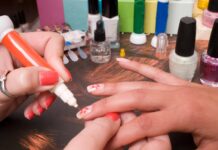Introduction:
Whether you love treating yourself to a manicure or pedicure regularly or just enjoy indulging in the occasional pampering session, there is one question that may have crossed your mind if you’re dealing with a fungal infection – is it safe to get a manicure or pedicure if I have a fungal infection? This is a valid concern, as the last thing you want is for your nail salon visit to worsen your condition or potentially put others at risk. In this blog post, we will delve into the topic of getting a manicure or pedicure with a fungal infection, discussing the safety considerations, risks, and precautions you should take to protect yourself and others.
Understanding Fungal Infections:
Fungal infections of the nails, also known as onychomycosis, can be caused by various types of fungi that thrive in warm, moist environments such as sweaty shoes or socks. Common symptoms of a fungal nail infection include thickened, discolored nails that may become brittle or crumble. If left untreated, fungal infections can spread to other nails or even to the skin, leading to discomfort and cosmetic concerns.
Is It Safe to Get a Manicure or Pedicure with a Fungal Infection?
When it comes to getting a manicure or pedicure with a fungal infection, the short answer is – it depends. While it is not recommended to have nail services done on nails that are visibly infected, there are circumstances in which it may be safe to proceed with caution. Here are some factors to consider:
1. Consult a Healthcare Professional: Before scheduling a nail salon appointment, it is essential to consult a healthcare professional, such as a dermatologist or podiatrist, to assess the severity of your fungal infection and determine the appropriate course of treatment. They can provide guidance on whether it is safe to have nail services done and recommend necessary precautions.
2. Choose a Reputable Salon: If you have received clearance from your healthcare provider to get a manicure or pedicure, make sure to choose a reputable salon that follows strict hygiene and sanitation practices. Look for salons that use clean tools, disposable liners for foot baths, and practice proper disinfection protocols to minimize the risk of fungal transmission.
3. Inform Your Technician: Be upfront with your nail technician about your fungal infection before the service begins. They may recommend avoiding certain treatments, such as cutting or filing the infected nail, to prevent spreading the fungus. Your technician can also take extra precautions, such as wearing gloves and using separate tools for infected nails, to reduce the risk of cross-contamination.
4. Practice Proper Home Care: In addition to salon visits, it is essential to practice proper home care to manage your fungal infection effectively. This may include keeping your nails clean and dry, applying antifungal treatments as prescribed by your healthcare provider, and avoiding tight, sweaty footwear that can exacerbate the condition.
Conclusion:
In conclusion, the decision to get a manicure or pedicure with a fungal infection depends on the severity of your condition and the precautions you and your nail salon take to ensure safety. By consulting a healthcare professional, choosing a reputable salon, informing your technician, and practicing proper home care, you can minimize the risk of complications and enjoy a relaxing nail care experience. Remember to prioritize your health and well-being when considering nail services with a fungal infection, and always seek professional guidance if you have any concerns.












